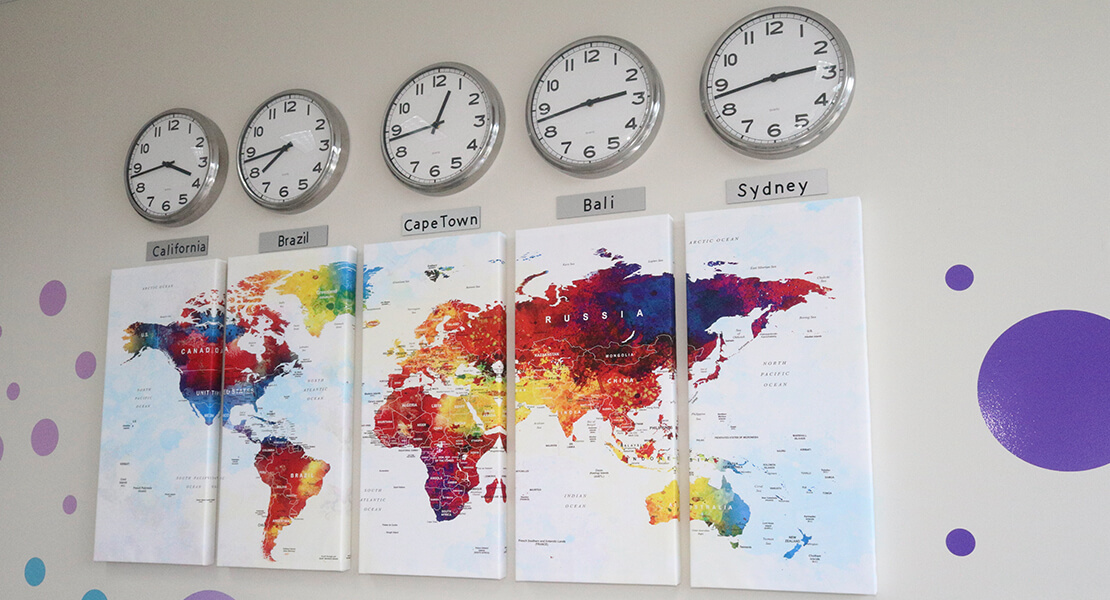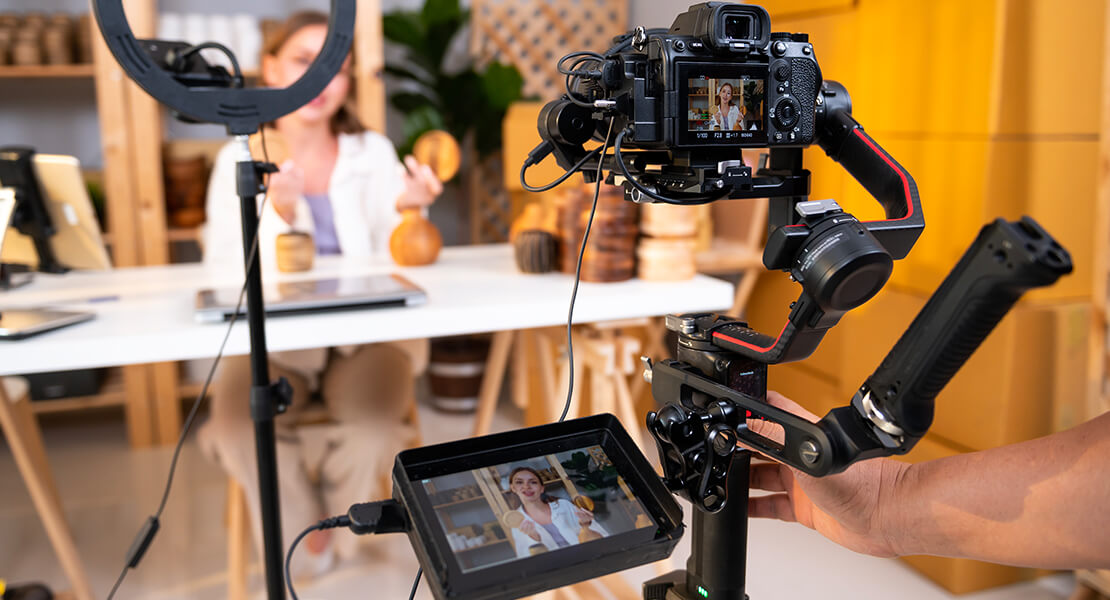
The world of video production has changed dramatically in the last few years. What used to require a full crew, physical presence, and lots of travel can now – in many cases – be done entirely remotely. While this shift has opened up a world of new possibilities, it’s also brought its own set of challenges. If you’re looking to produce high-quality video content without everyone being in the same room (or even the same country), you’re not alone – and you’ve definitely got options.
Remote video production has become more than just a workaround. It’s a strategic solution embraced by creative teams, brands, and businesses across the globe. Whether it’s directing talent over Zoom, collaborating with editors via cloud platforms, or sending out self-shoot kits to contributors, the methods are evolving rapidly – and so are the expectations. In fact, many clients now expect remote flexibility as standard. What used to be considered “nice to have” is quickly becoming the norm.
Of course, the move to remote doesn’t come without friction. From tech reliability and time zone coordination to maintaining visual quality and creative flow – it takes thought, structure and the right tools to get it right. But the payoff? Faster turnarounds, lower overheads, broader talent access, and content creation that’s as flexible and global as your audience. In this article, we’ll walk through the most common challenges you might face with remote video production, along with the growing opportunities it brings for brands, content creators, and agencies alike.
The Rise of Remote Production – and Why It’s Sticking Around
Let’s be honest – remote video production didn’t start as a trend. It was a necessity. The global pandemic forced companies, creators and clients to rethink how content gets made. But something unexpected happened: many realised it actually worked. It saved time, cut costs, and opened up creative partnerships that weren’t limited by geography.
As shoots were cancelled and studios closed, producers turned to home setups, cloud collaboration, and remote crews to keep things moving. What began as a quick fix soon became a blueprint for a more flexible way of working. Suddenly, it didn’t matter if your editor was in Edinburgh, your voiceover artist was in Sydney, and your director was calling in from New York – the show could still go on.
Today, remote production isn’t just a Plan B. It’s become a go-to strategy for teams looking to stay agile, scale quickly, and collaborate globally. It also offers creative control from anywhere, with tech that allows real-time feedback, live direction, and cloud-based editing workflows. Whether it’s marketing content, internal communications or branded documentaries, more teams are embracing this hybrid, borderless approach. And it’s not going away anytime soon – in fact, it’s only just getting started.
Challenge #1: Quality Control from a Distance
One of the first concerns people have about remote production is simple: how do I make sure it looks good? When you’re not physically on set, you don’t have eyes on the lighting, framing, wardrobe or sound. That can feel a bit like flying blind. The key here is preparation and trust. Remote productions that succeed often rely on detailed pre-production, including storyboards, call sheets, tech checks, and equipment guidelines for local crews or talent.
Where possible, many teams use live video links (via Zoom, Riverside, or dedicated remote director platforms) to monitor shoots in real time. That means even if you’re in London and your crew is in Cape Town, you’re still able to see the frame and give direction – just like being there.
In addition to live monitoring, many production teams now request test footage or location walkthroughs in advance to assess the lighting and camera setup. Creating visual references or mood boards can also help local crews match the desired aesthetic more precisely. Communication here is everything – from wardrobe notes to shot composition. And don’t underestimate the power of a remote tech rehearsal. Taking the time to iron out issues before the cameras roll can save hours (and a lot of headaches) later. Remote quality control is entirely possible – it just requires more planning up front and a bit of creative problem-solving along the way.
Challenge #2: Coordination Across Time Zones

Working remotely usually means working across multiple time zones. That’s both a blessing and a curse. On one hand, you can shoot while you sleep – great for productivity. On the other, you’ll need to juggle schedules carefully to avoid delays or miscommunication. Tools like Trello, Notion, and Slack can help keep everyone on the same page. But the real game-changer? Clear communication.
Always confirm call times, deadlines, and deliverables in writing. Don’t assume everyone’s operating on your clock. And if you’re dealing with international talent or clients, factor in cultural and language differences, too. Clarity beats cleverness every time. It’s also worth establishing a standard format for updates – daily check-ins, weekly reports, or shared calendars – so that nothing falls through the cracks.
It also helps to appoint a dedicated coordinator or project manager to handle the moving parts – someone who knows when things are due and who’s available in each time zone. Even simple things like agreeing on which time zone to use as your base (e.g. GMT or UTC) can avoid a lot of confusion.
Tools like World Time Buddy and Google Calendar integrations make scheduling easier, but there’s no substitute for a team that communicates proactively. When everyone knows what to expect and when, projects flow better. The key is to build in buffers. Don’t expect instant replies or overnight feedback. Give your team space to do their best work, and remote collaboration can become one of your biggest strengths.
Challenge #3: Tech Reliability and Remote Setups
Not everyone has access to a studio setup or even a reliable internet connection. That’s something you’ll need to plan for early. The truth is, tech hiccups can derail a remote shoot faster than you might think – and once you’re recording, there’s often little room for error. That’s why having a clear, documented setup guide is essential. If you’re recording talent remotely, consider sending out a remote production kit – a package with a camera, tripod, microphone and basic lighting that can be set up at home. Some brands also include a ring light, power banks, and even sound-dampening panels depending on the recording space.
Alternatively, you might direct local crews or hire freelancers in your target location to film according to your spec. This hybrid model offers more control while still staying cost-effective.
Just remember: your tech is only as good as the person using it. Include setup calls, walkthroughs, and backups. Don’t just assume your contributor knows where to position a light or plug in a mic – walk them through it. And always have a Plan B – whether that’s a different recording method, a backup connection (like mobile data), or even a reschedule window. Recording to a local device (instead of relying solely on cloud platforms) can also protect against connection dropouts. In remote production, being overly prepared isn’t just smart – it’s absolutely necessary.
Opportunity #1: Bigger Talent Pool, Smaller Costs

One of the biggest upsides of remote production is access. You’re no longer limited to hiring people within driving distance of your office. That shift alone changes the game.
You can work with on-camera talent, voice-over artists, editors and animators from anywhere in the world. That means more diverse voices, broader cultural relevance, and creative partnerships you might never have explored before. For example, a brand producing a campaign in the UK might collaborate with a motion designer in Berlin, a sound designer in Cape Town, and an editor in Toronto – all in real time. This level of flexibility and global reach was unthinkable just a few years ago.
Plus, you’re likely to save on travel, location, and studio fees. There’s no need for accommodation budgets, catering, or costly venue hires. Even better, it reduces downtime. Talent can record from home, review feedback within hours, and turn around content far faster than traditional workflows. Remote production allows you to scale without the overhead, and that’s something both startups and global brands are paying attention to. It also supports a more agile, project-based model – meaning you can bring in the right people when you need them, without long-term commitments. In today’s fast-paced content landscape, that’s a serious advantage.
Opportunity #2: Faster Turnarounds and Agile Content Creation
Traditional shoots can take weeks to organise. Permits, gear hire, crew bookings – it adds up fast. But with a remote model, many of those logistical roadblocks disappear. No location scouting, no permits, no worrying about weather delays or transport logistics. You can brief a team, agree a shooting window, and have footage coming back to your inbox within hours or days.
Need a product video turned around in 48 hours? With the right remote team, that’s entirely doable. Want social content filmed from a creator’s home studio? No problem. Remote video production makes fast content possible – without sacrificing quality. In fact, it often gives content a more authentic, human touch that resonates better on platforms like TikTok, Instagram or YouTube.
It’s especially useful for brands needing regular updates, like e-commerce launches, campaign rollouts or social series. The speed and flexibility are hard to beat. You can brief several creators at once, gather clips from multiple locations, and stitch together polished edits all within a few days. And because you’re not locked into one location or studio, you can iterate much more freely. Want to test different versions of an ad? Swap messaging mid-shoot? Remote production makes that kind of agility not just possible – but practical. It allows your content strategy to evolve in real time, keeping pace with trends, feedback, and business needs.
Opportunity #3: Built-In Sustainability
Producing content remotely doesn’t just save time and money – it’s better for the planet, too. Fewer flights, smaller crews, and less equipment transport mean a significantly reduced carbon footprint. That’s not just good practice – it’s something audiences (especially younger ones) are beginning to expect from modern brands.
The environmental impact of traditional productions can be surprisingly high. From flying talent and crew to multiple locations, to the energy required for lighting and on-site setups – it all adds up. Remote production strips a lot of that back. Teams work from where they are, with minimal travel. Talent records from home. Editors work in the cloud. It’s a leaner, cleaner way to work.
Remote video production aligns well with sustainable storytelling, and it’s something more companies are weaving into their brand values and creative processes. It’s also a selling point you can confidently share with your audience – a way to show you’re committed to reducing waste without compromising on creativity. Some brands even go further by working with local crews to support regional economies and reduce carbon-heavy shipping or travel. The best part? Sustainability doesn’t mean settling for less. On the contrary, it can lead to more meaningful, community-focused stories – the kind of content that feels real, relevant and responsible.
Tips for Making Remote Production Work Smoothly

If you’re thinking about moving towards remote video production, here are a few tips to help you hit the ground running:
• Pre-pro is
everything. Plan, prep, and over-communicate.
A solid pre-production process will save you time, money, and stress. Share
clear briefs, creative references, and technical expectations upfront. Make
sure every contributor knows what’s expected of them – from wardrobe to shot
composition. Hold virtual pre-shoot meetings to align on objectives and
timelines. Build in time for questions and approvals. The more thorough you are
before the cameras roll, the smoother everything will run.
• Work with
experienced remote talent. It makes all the difference.
People who’ve worked remotely before tend to be better at self-managing and
problem-solving. They’re often equipped with their own gear and understand how
to optimise their space for recording. They’ll know how to communicate clearly
and follow direction without needing constant oversight. Don’t just look for
talent – look for collaborators. Check previous work, ask for references, and
pay attention to how they communicate. It’ll save you from surprises down the
line.
• Use tools that
streamline collaboration – like Frame.io, Google Drive, and cloud-based editing
platforms.
Digital tools can make a remote production feel like you’re all in the same
room. Use Frame.io or Vimeo Pro for time-coded video feedback. Share scripts,
assets, and deliverables in real time using Google Drive or Dropbox. Platforms
like Descript or Adobe Team Projects let editors collaborate from different locations
with ease. Assign version control to avoid confusion. And keep everything
neatly organised – it makes post-production faster and far less chaotic.
• Get creative with
formats. Animation, motion graphics, and UGC all thrive in remote workflows.
You don’t always need a traditional shoot to tell a great story. Animation
allows for high-impact visual storytelling without location constraints. Motion
graphics are perfect for explainer content or branding. User-generated content
(UGC) feels authentic and relatable – ideal for social media. Stock footage and
voiceover can also go a long way when used thoughtfully. Explore different
mediums and build your creative approach around flexibility.
• Test your tech
before the shoot – and again on the day.
Never assume everything will work just because it did last week. Run test calls
to check internet speeds, sound quality, and lighting setups. Confirm camera
settings and frame composition with the talent. Use backup devices or record
locally where possible. Always have a backup plan for live links or uploads. A
20-minute tech check can save an entire shoot from going sideways.
• Keep everyone in
the loop. Transparency builds trust and smoother outcomes.
Update your team regularly, even if it’s just to confirm things are on track.
Share progress reports and timelines with all stakeholders. Make space for
feedback at key stages. If something’s gone off-track, flag it early and
discuss how to adapt. Remote work thrives on good communication – silence leads
to assumptions. The more connected your team feels, the better your final
product will be.
Final Thoughts: The Future of Video Is Flexible
Remote video production has turned the industry on its head – and for many of us, in the best possible way. It’s not a compromise anymore. Done right, it’s a creative, cost-effective, and scalable solution to modern content demands.
Yes, it comes with challenges. You’ll need to rethink workflows, lean on digital tools, and get comfortable with the idea of managing shoots from afar. But for those willing to adapt and think differently, the rewards are huge. It’s faster, more efficient, and opens the door to talent, voices, and perspectives you may never have had access to in a traditional setup.
So whether you’re a marketer trying to stay on top of fast-moving campaigns, a business owner looking to produce professional content on a budget, or a creative professional ready to build new partnerships across the globe – now’s the time to embrace what remote production has to offer.
The tools are here. The talent is everywhere. And the demand for fresh, engaging content has never been higher. Your next great video? It could be made from anywhere – and still make a massive impact. The future of video isn’t tied to a studio. It’s as flexible, mobile, and creative as you are.
If you’d like help planning or producing your next video project, feel free to contact us at Spiel—we’d be happy to offer a free consultation and talk through your goals.

